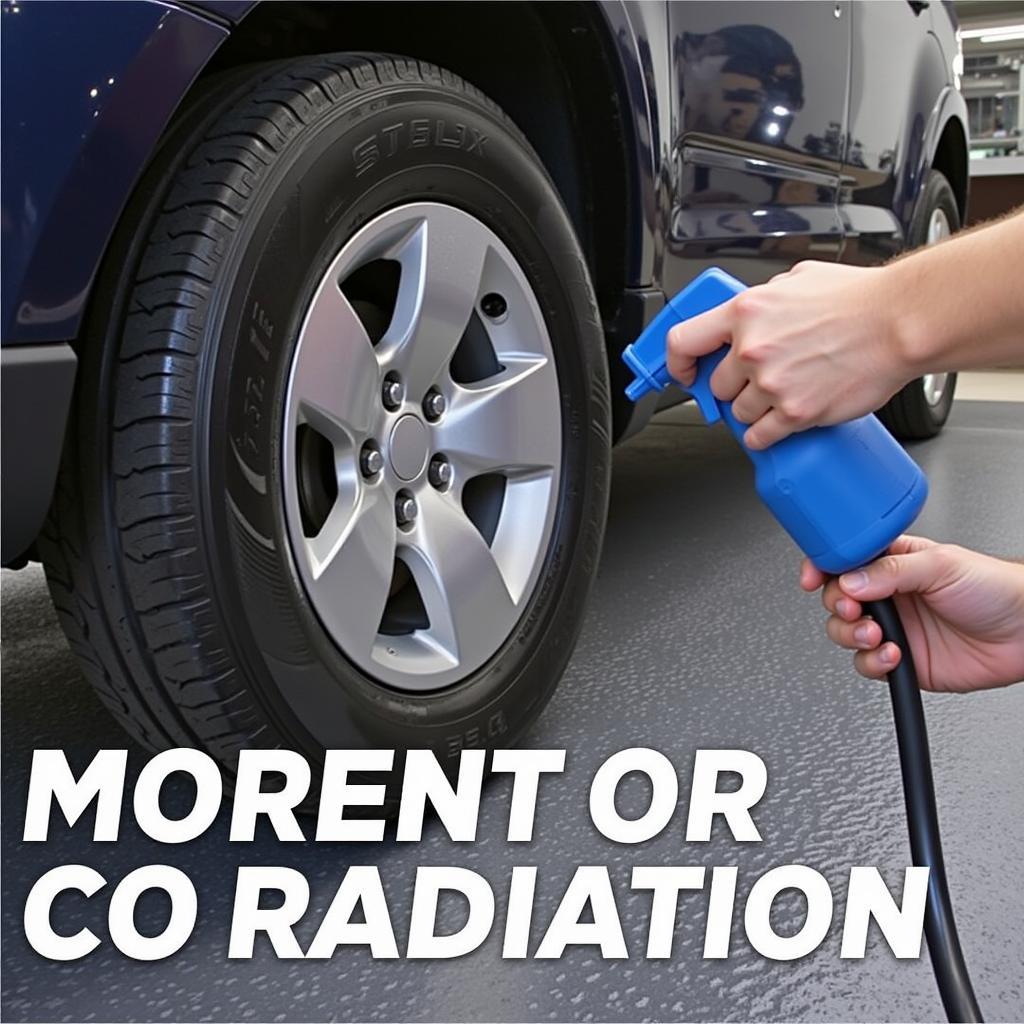Detailing your car’s undercarriage is crucial not just for aesthetics but also for its longevity. Knowing how do detail undercarriage original car ensures you protect it from rust, corrosion, and road grime build-up. This comprehensive guide will walk you through the process step by step, providing you with the knowledge and techniques to achieve a showroom-worthy undercarriage.
Why Detail Your Car’s Undercarriage?
Beyond the visual appeal, a clean undercarriage offers significant benefits. Salt, grime, and road debris can accumulate over time, leading to corrosion and rust. Regular cleaning helps prevent these issues, preserving the structural integrity of your vehicle and extending its lifespan. Additionally, a detailed undercarriage makes it easier to spot potential problems like leaks or damage.
Essential Tools and Materials for Undercarriage Detailing
Before you begin, gather the following:
- High-pressure washer (or garden hose with spray nozzle)
- Car ramps or jack stands
- Safety glasses and gloves
- Degreaser or all-purpose cleaner
- Undercarriage cleaner (optional)
- Wheel brushes (various sizes)
- Detailing brushes (long-handled)
- Rust remover (if necessary)
- Undercarriage coating or sealant (optional)
- Microfiber towels or drying cloths
Step-by-Step Guide to Detailing Your Car’s Undercarriage
-
Preparation: Park your car on a level surface and secure it using car ramps or jack stands. Ensure the vehicle is stable and safe to work under. Put on your safety glasses and gloves.
-
Initial Rinse: Use a high-pressure washer or garden hose to thoroughly rinse the entire undercarriage. This will remove loose dirt, debris, and grime.
-
Apply Degreaser: Spray a degreaser or all-purpose cleaner on the undercarriage, focusing on areas with heavy grime build-up. Let it sit for the recommended time according to the product instructions.
-
Scrubbing: Use wheel brushes and detailing brushes to scrub all areas of the undercarriage. Pay attention to hard-to-reach spots like suspension components, frame rails, and wheel wells.
-
Rust Removal (if necessary): If you encounter rust, apply a rust remover following the product instructions. This may require multiple applications and some scrubbing.
-
Final Rinse: Rinse the entire undercarriage again with the high-pressure washer or garden hose to remove all traces of cleaner and debris.
-
Drying: Allow the undercarriage to air dry or use microfiber towels or drying cloths to speed up the process.
-
Apply Undercarriage Coating (optional): Consider applying an undercarriage coating or sealant to protect against future rust and corrosion. Follow the product instructions for application.
 Protecting Car Undercarriage with Coating
Protecting Car Undercarriage with Coating
Maintaining a Clean Undercarriage
Regular maintenance is key to preserving your car’s undercarriage. Rinse the undercarriage regularly, especially during winter months when road salt is prevalent. Repeat the full detailing process at least once or twice a year, depending on your driving conditions.
Tips for a Professional Finish
- Use different sized brushes to reach all areas effectively.
- Work in small sections to ensure thorough cleaning.
- Don’t forget to clean the wheel wells.
- Consider using a dedicated undercarriage cleaner for optimal results.
“Regular undercarriage cleaning is a small investment that can pay off big in the long run by preventing costly repairs,” says renowned automotive expert, David Miller, CEO of AutoCare Solutions.
Conclusion
Knowing how do detail undercarriage original car is an essential skill for any car owner. By following this guide and performing regular maintenance, you can protect your car’s undercarriage from damage, extending its lifespan, and keeping it looking its best.
FAQs
- How often should I detail my car’s undercarriage? At least once or twice a year, depending on driving conditions.
- What is the best way to remove rust from the undercarriage? Use a rust remover specifically designed for automotive use.
- Can I use a regular garden hose for undercarriage cleaning? Yes, but a high-pressure washer is more effective.
- What is the benefit of using an undercarriage coating? It protects against future rust and corrosion.
- Is it necessary to dry the undercarriage after cleaning? Yes, to prevent rust formation.
- What type of brushes should I use? A combination of wheel brushes and detailing brushes.
- How do I prevent rust on my car’s undercarriage? Regular cleaning and applying a protective coating.
Need support? Contact us via WhatsApp: +1(641)206-8880, Email: [email protected]. We have a 24/7 customer support team.

Leave a Reply